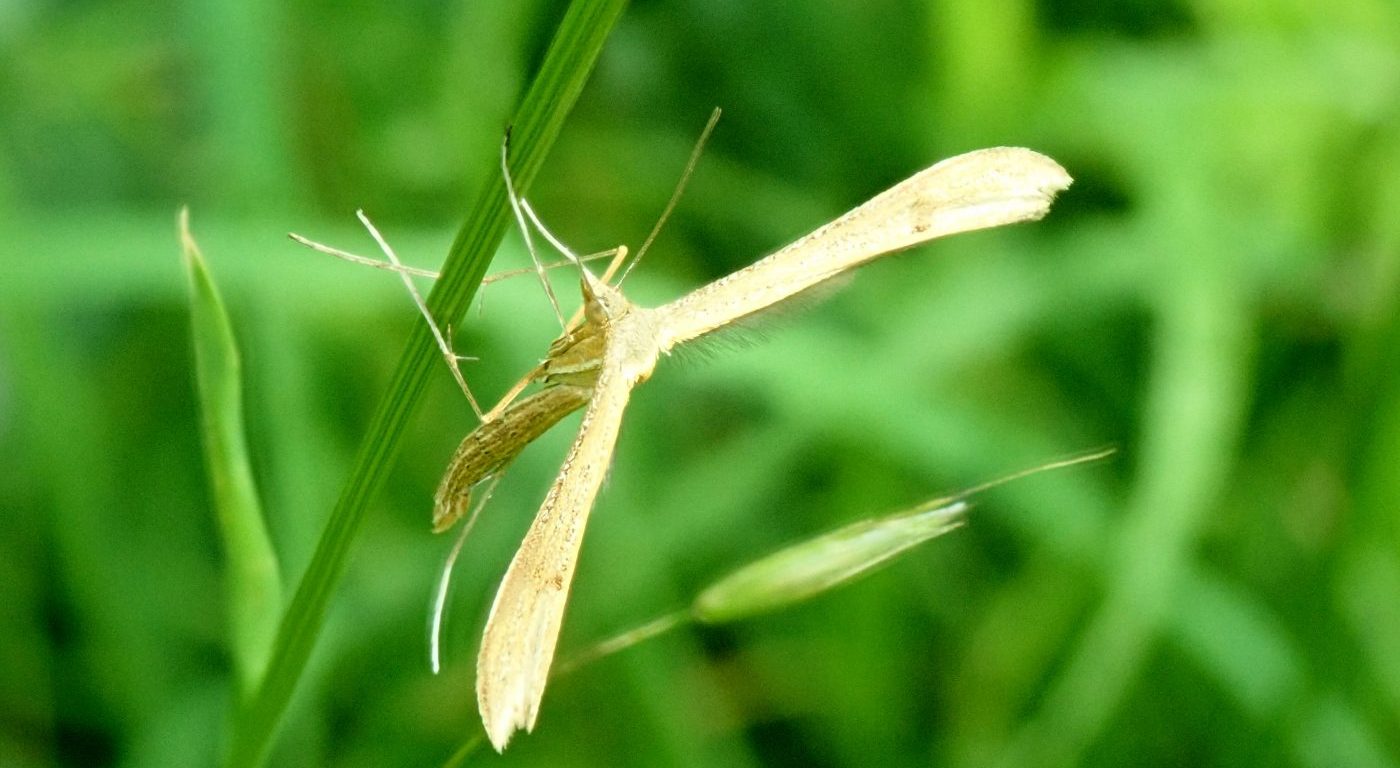Have you been following the insect photo diary of Prof Bill Amos of the Department of Zoology? Here it continues with beautiful butterflies, unusual moths, and surprising flies.

The marbled white butterfly. As a child growing up near lots of chalk downland this species was ten a penny. In recent years it seems to be getting better at living in other habitats and I see it more and more often around Cambridge, which is a nice surprise. 
A tiny grass fly. I never realised until this year how common these are but they are very small indeed, so usually get overlooked. Close-up, their stiking yellow and black colouration is rather lovely. 
A hungry bumblebee filling up! I think this one is Bombus pascuorum, though I am not very good on bumblebee identification and this is the only photo I took. 
A plume moth. This is a remarkable moth with extremely narrow wings. If you have trouble understanding how aircraft fly, try this chap! On the plus side, when they land in dry grass they are incredibly difficult to spot. 
Another unusual moth, yes it is a moth! This is the 6-belted clearwing and it does a great job of pretending to be a wasp. It hatches out of its chrysalis with scales all over its wings but the first time it flies most fall off from the middle, leaving mainly transparent wings that are most un-mothlike. 
A dazzlingly lovely hoverfly, Chrysotoxum festivum. Compared with most other yellow and black hoverflies, the yellow appears much brighter. Also, it has noticeably long antennae. 
Mating pair of 6-spot burnet. This is a common moth in any wildflower meadow. Before they were cut for hay, this species was hugely abundant in Trumpington Meadows. Another case of a moth that, if rare, people would travel for miles to see! 
Not everyone likes flies but many can be rather lovely close-up. This is Tachina fera, a large Tachinid fly, a group characterised by covered in bristles, and it parasitises various caterpillars. 
The ringlet butterfly. In any wild grassy area this is one of the two commonest medium-sized brown butterflies. Most are usually meadow browns but amongst these look out for slightly darker, marginally smaller butterflies. When they settle you can see the lovely series of eye-spots that tell you it is a ringlet.
You can see more of Bill’s photographs on the blog:
An Insect A Day for bee fly, orange tip buttefly and parasitic wasp.
An Insect A Day continues for scorpion fly, shield bug and click beetle.
An Insect A Day Part 3 for wasp beetle; dragonfly and aphids giving birth.
An Insect A Day Part 4 for metallic beetles and day-flying moths.
An Insect A Day Part 5 for butterflies, beetles and clear-wing moths.
An Insect A Day Part 6 for beetles, hoverflies and the silken webs of emine moth caterpillars.
An Insect A Day Part 7 for lacewings, butterflies, hoverflies and more.
An Insect A Day Part 8 for longhorn beetles, hoverflies and camouflaged caterpillars.
An Insect A Day Part 9 for damselflies, crickets and spiders.
Insect-eye View for sawfly, hoverfly and solitary bees.
Why not have a go at photographing insects yourself? We would love to see your photos of wildlife where you are. Share with us on Facebook, Twitter or Instagram by tagging us or using #OpenYourWindowBingo to feature in our online Community Gallery.


One thought on “An Insect A Day Part 10”